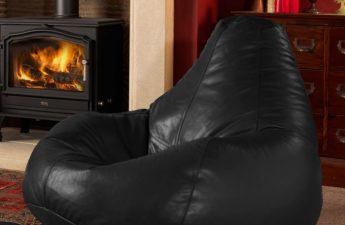Do-it-yourself chair mats allow you to createan additional element of coziness, especially if they match the color of curtains, kitchen towels or even potholders. They do not take much time to make, you can use both new fabrics and used items. Often, such rugs can be used not only for home use.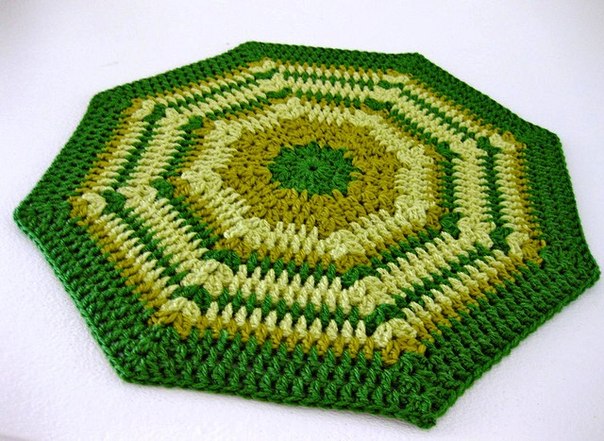 A chair mat can be a great handmade gift.
A chair mat can be a great handmade gift.
Multifunctional products
For example, a quilted rug on a chair canused by mothers with children or pensioners not only at home, but also for walks outside, where it can be placed on a bench. It is often used to protect expensive upholstery on furniture if a pet has taken a fancy to the chair. To make a rug, you need to make a pattern from newspaper according to the size of the chair seat, on which you need to mark the places where the product will be attached so that the rug does not shift, but this is not necessary.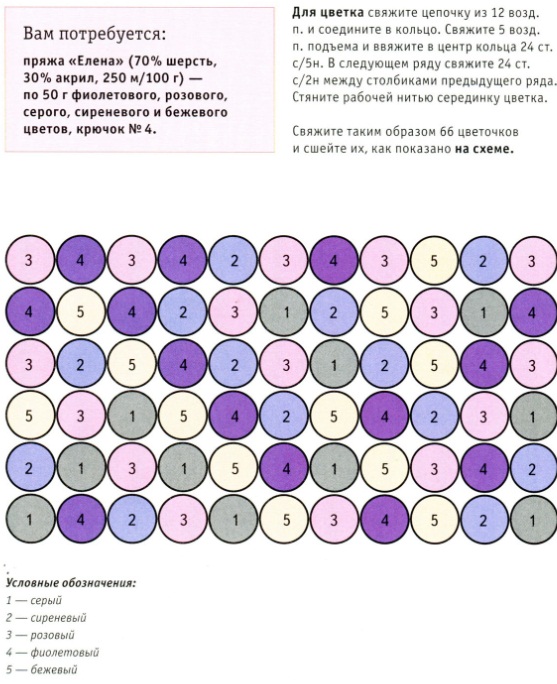 Crochet rug pattern.The resulting pattern is used to cut two pieces of a chair rug made of fabric and one piece of padding polyester or other filler. The fabric elements are cut with seam allowances of 1.5-2 cm, and on the padding polyester, on the contrary, it is necessary to remove approximately 1 cm on each side so that it fits into the cover. In addition, two strips of fabric at least 7-8 cm wide and about 0.5 m long need to be cut out for the ties. The rug is usually assembled starting with the ties, which need to be folded in half, stitched lengthwise and along one narrow side, then the basting removed, the product turned inside out, the second narrow edge hand-stitched and carefully ironed. Next, the padding polyester is tacked to the back of the rug, and the ties are folded in half and tacked to the lower front side so that during further stitching the middle of the fold falls under the line. Then the fabric parts of the rug are folded face to face, a stitch is made along the sides so that the product can be turned inside out. After this, the basting (if there was one) is removed, the quilted rug is turned inside out, the hole through which it was turned inside out is carefully stitched by hand by folding the allowances inward. Such a rug is easy to wash in a washing machine. Necessary tools and materials:
Crochet rug pattern.The resulting pattern is used to cut two pieces of a chair rug made of fabric and one piece of padding polyester or other filler. The fabric elements are cut with seam allowances of 1.5-2 cm, and on the padding polyester, on the contrary, it is necessary to remove approximately 1 cm on each side so that it fits into the cover. In addition, two strips of fabric at least 7-8 cm wide and about 0.5 m long need to be cut out for the ties. The rug is usually assembled starting with the ties, which need to be folded in half, stitched lengthwise and along one narrow side, then the basting removed, the product turned inside out, the second narrow edge hand-stitched and carefully ironed. Next, the padding polyester is tacked to the back of the rug, and the ties are folded in half and tacked to the lower front side so that during further stitching the middle of the fold falls under the line. Then the fabric parts of the rug are folded face to face, a stitch is made along the sides so that the product can be turned inside out. After this, the basting (if there was one) is removed, the quilted rug is turned inside out, the hole through which it was turned inside out is carefully stitched by hand by folding the allowances inward. Such a rug is easy to wash in a washing machine. Necessary tools and materials:
Return to Contents</a>
Artichoke Pad
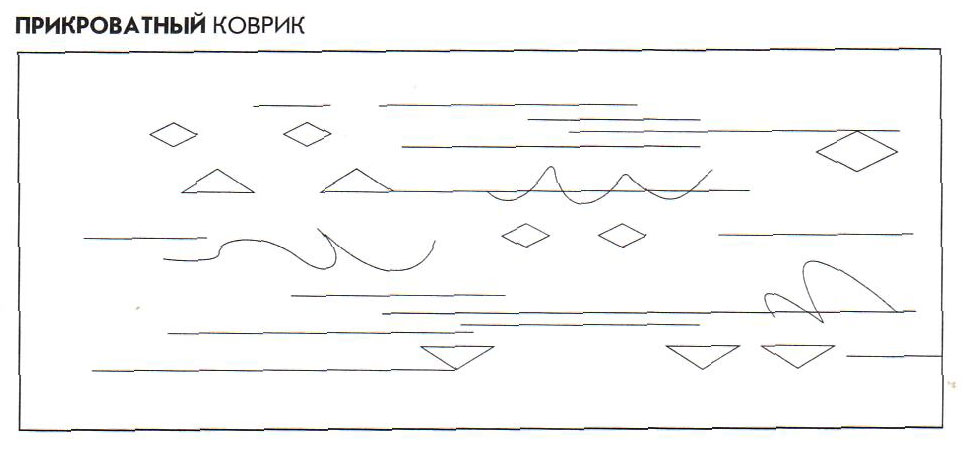 Schemes for embroidering covers for a stool andrugs using the “stuffing” technique. No less impressive are rugs for chairs made using the artichoke technique. When making it, you can use small pieces of fabric that are left over from sewing other models, as well as old things. The base of the rug is made of thick fabric such as drape based on a pattern taken from the seat of a chair using a newspaper. Next, you need to make “scales” for the future pattern. To do this, squares of the required size are cut from the scraps of fabric (often 6x6 cm), which need to be folded in a special way. The resulting triangles need to be fastened with tailor's pins or steamed with a hot iron so that they hold their shape (depending on the fabric). Then, on the base in the center, you need to mark two perpendicular lines and attach four triangles to the middle of the resulting cross so that together they form a square that needs to be sewn using a sewing machine. The seam allowance in this case should be about 0.7 cm. A second row of elements, 8 in total, is laid on top of the resulting square. The laying should first be done along perpendicular lines, then new triangles should be added to the space between the first four. The elements are also pinned and sewn on using a machine. The third row may already have 12-16 elements, etc., until the entire base is filled. A decorative braid is usually sewn along the edge of the base to hide the attachment point of the last row. Tools and materials:
Schemes for embroidering covers for a stool andrugs using the “stuffing” technique. No less impressive are rugs for chairs made using the artichoke technique. When making it, you can use small pieces of fabric that are left over from sewing other models, as well as old things. The base of the rug is made of thick fabric such as drape based on a pattern taken from the seat of a chair using a newspaper. Next, you need to make “scales” for the future pattern. To do this, squares of the required size are cut from the scraps of fabric (often 6x6 cm), which need to be folded in a special way. The resulting triangles need to be fastened with tailor's pins or steamed with a hot iron so that they hold their shape (depending on the fabric). Then, on the base in the center, you need to mark two perpendicular lines and attach four triangles to the middle of the resulting cross so that together they form a square that needs to be sewn using a sewing machine. The seam allowance in this case should be about 0.7 cm. A second row of elements, 8 in total, is laid on top of the resulting square. The laying should first be done along perpendicular lines, then new triangles should be added to the space between the first four. The elements are also pinned and sewn on using a machine. The third row may already have 12-16 elements, etc., until the entire base is filled. A decorative braid is usually sewn along the edge of the base to hide the attachment point of the last row. Tools and materials:
Return to Contents</a>
Spectacular mats of old things
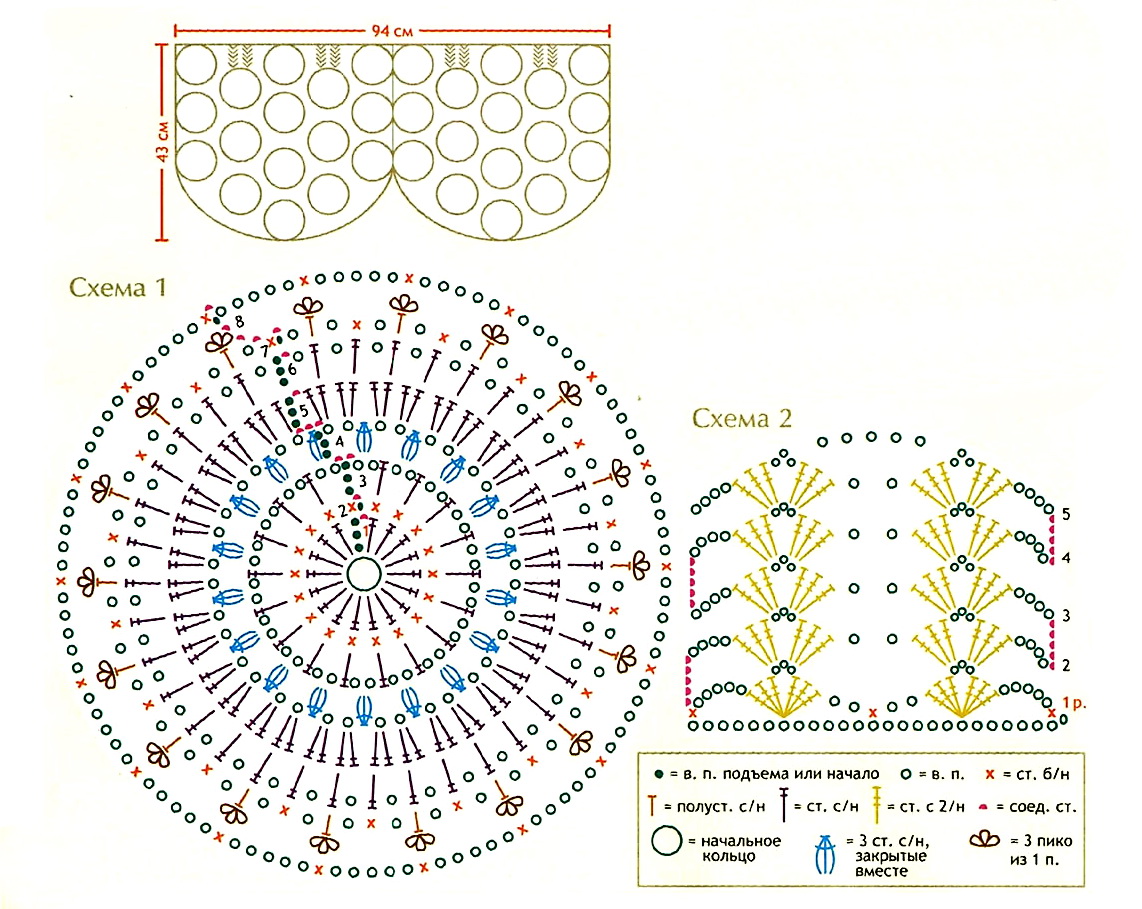 Scheme of a round chair cover.A cute rug for a chair with a square seat can be made using scraps of knitted fabrics and a base mesh, which can be purchased at a hardware store. In addition to the fabric and mesh, you will need a crochet hook and scissors to make the rug, with which you will need to cut the knitwear into strips of the desired length. The technique for making the product is quite simple. Before work, the outline of the mesh is glued with tape so that it does not fray during work. Next, knitted ribbons are woven into the base with a crochet hook in a random order or in the form of a pattern. The ribbons for such a rug should be long and wide enough so that you do not feel the base when sitting on the chair. The times when old woolen things were unraveled and re-tied are almost gone. However, a used sweater, after unraveling, can be suitable for making a pom-pom rug for a chair; such a thing will last quite a long time, will look funny and create especially pleasant sensations for the body. To make it you will need:
Scheme of a round chair cover.A cute rug for a chair with a square seat can be made using scraps of knitted fabrics and a base mesh, which can be purchased at a hardware store. In addition to the fabric and mesh, you will need a crochet hook and scissors to make the rug, with which you will need to cut the knitwear into strips of the desired length. The technique for making the product is quite simple. Before work, the outline of the mesh is glued with tape so that it does not fray during work. Next, knitted ribbons are woven into the base with a crochet hook in a random order or in the form of a pattern. The ribbons for such a rug should be long and wide enough so that you do not feel the base when sitting on the chair. The times when old woolen things were unraveled and re-tied are almost gone. However, a used sweater, after unraveling, can be suitable for making a pom-pom rug for a chair; such a thing will last quite a long time, will look funny and create especially pleasant sensations for the body. To make it you will need:
Before preparing pom-poms, you need to measure the chair androughly calculate how much small parts will be needed for the rug, how the colors will be arranged, whether the pompoms will be the same size. Next, take two patterns (usually made of paper) in the form of circles with holes in the center, put them on top of each other, and tightly wrap them with thread. The thread turns need to be cut along the fold, spread the patterns, wrap the center of the pompom with thread, cut the patterns, remove them and fluff up the pompom. After that, the made pompoms are collected on a thick thread in the right order or sewn onto the base (preferably). Such a rug for a chair will be quite expensive in price, since any yarn is not cheap today. Therefore, it is worth considering another way to make a voluminous rug from fabric pompoms with a synthetic padding. To do this, you will need:
The leftover fabric is cut according to the patternsmany circles. Then, a synthetic padding is placed in the middle of each of them, and the edges are pulled together with a strong thread so that a ball is formed. After this, the balls need to be sewn together, periodically applying the product to the seat of the chair, or sewn onto the base according to a pre-made pattern. Often, such interior elements are made of bright, multi-colored fabrics, which makes them additionally attractive in the eyes of children. Therefore, such an element can also be made for a children's chair. Return to contents</a>
How to decorate the interior in Japan
The above mentioned methods of making rugsare available to almost any housewife, and to make the products offered below, you will need to know how to crochet and read knitting patterns. For example, such a rug for a chair, developed by craftswomen in Japan, for its execution will require thick yarn, a thick hook, optionally a synthetic padding inside and many hours of work. First, the top of the rug is made, then the bottom, after which both sides are connected with a strapping (you can use a crab step), the filler is inserted, tassels are made and attached. Made of woolen non-prickly materials, such a rug is almost always loved by children who do not like to sit on cold surfaces. For making rugs for a chair, more opportunities are available to those needlewomen who own a crochet hook, and not knitting needles, since this tool allows you to knit complex shapes, including animals, flowers, etc., as well as numerous patterns. Therefore, a rug made of thick yarn can be made according to many patterns for napkins with a dense pattern. In some countries, such products are made using a simple chain of air loops, which is twisted into a spiral and sewn between rows.


